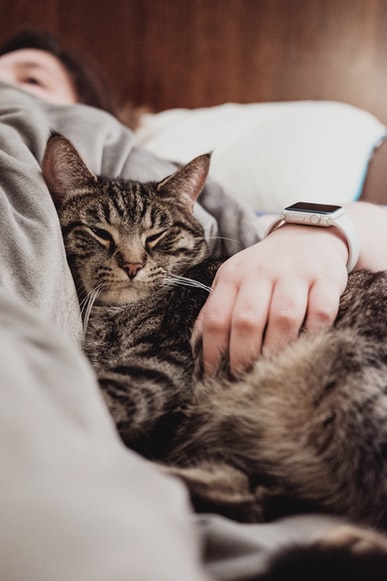American Bobtail is a fairish to large cat, with conspicuous natural bobtails. It is an athletic breed, typically well-muscled, and sporting a strong look. This breed has many dog-like tendencies, a hunting gaze, combined with their built, provides them with a wild feline appearance. However, this is seemingly just a facade, as the American Bobtail is a genuine domestic cat at heart. It is docile, sweet, affectionate, playful yet not highly active, making it an ideal type for many home types.
Origin of the American Bobtail
American Bobtail’s unique, shortened tail is a result of natural selection and genetic mutation, which they need to survive feral environments. Felines with bobtails have been present throughout history. However, the breed is only a recent natural breed. It was only in the 1960s when American Bobtail cats were recognized by the various cat associations.
John and Brenda Sanders took a vacation in Arizona when they spotted a bobtail cat and had it mate with their female cat when they went back home in Iowa, producing sweet litters with distinct shortened tails. Soon enough, the breeders have bred their cats with strong, muscular bodies, and wild appearance, but gentle temperaments resulting in the majority of the American Bobtail cats. Along the way, more cats have been incorporated in the breeding process, resulting in various variants of the breeds, such as the mid-haired and long-haired cats.
Physical Characteristics of the American Bobtail
Length:14 to 16 inches
Weight: 12 to 16 pounds (Male), 7 to 11 pounds (Female)
Life Expectancy: 13 to 15 years
Coat Color: White, blue, blue, cream, red, lavender, chocolate, fawn, cinnamon with different shadings and patterns
Type of Coat: Short, Medium, Long
Eye Color: Gold, yellow, copper, green, blue
American Bobtail cats are stocky, fairish to large furballs, with strong bone structures and sturdy muscles. Their broad chest, which is subtly arched backwards, providing them with their wild cat or Lynx appearance. The forelegs are slightly shorter than the hind-legs, while paws tend to be round and large, with hair tufts occurring between the toes, perfect for winter and snow. The head is wedge-shaped, with a prominent chin, and a wide muzzle with large whisker pads. Meanwhile, the eyes are big, almond-sized. The ears are average-sized, located quite low on their skull. Brows to the nose appear to have a concave structure. However, the most conspicuous feature of these cats is their short tail, wherein they got their name. It is covered with thick, fuzzy fur, and is always suggestive of the emotions of its owner.
American Bobtail Personality
While they have a wild feline look, American Bobtail cats have a docile temperament. They are sweet, affectionate, and intelligent, making them a relatively popular breed. Highly adaptable, it is easy for them to bond with their owners, and to adjust to many types of home environments. They may demand attention, by sitting on laps, or by meowing.
These cats are fun-loving, and playful, blessed with natural abilities and smarts to escape fastened doors and close rooms. They are energetic, but not hyperactive. When visitors come to the house, they are rather curious rather than shy, boasting an outgoing attitude and will never hide under beds. If introduced properly, they get along with other cats and cat-friendly pets.
Caring for the American Bobtail
American Bobtail cats are a low-maintenance cat breed. Brushing them once or twice a week is sufficient to remove dander, debris, and dead skin cells and keep their coat healthy. However, they may shed a little more during spring and fall, which may require frequent grooming during the said times. Bathing them is rarely necessary.
As with other cats, good dental hygiene is essential to avoid periodontal diseases. Brushing their teeth daily is the best option, but once a week would suffice to keep them healthy. Plaque-controlling treats may aid in promoting their dental health, but should only be used as a supplement option, and must never be the sole method of their dental cleaning.
Nail trimming must be done every few weeks, or when necessary. Neatly trimmed nails will help to keep their paws healthy but must still be examined for any injury or infection.
Meanwhile, use a soft, damp cloth to wipe the eyes’ corners should there be any discharge, but use different areas of cloth to avoid spreading any possible infections. For the eats, weekly cleaning is sufficient. Utilize cotton balls or cotton pads in removing any dirt or debris, moistened with warm water and apple cider vinegar mixture. Never use cotton swabs as they are prone in damaging the ears’ delicate interior structure.

